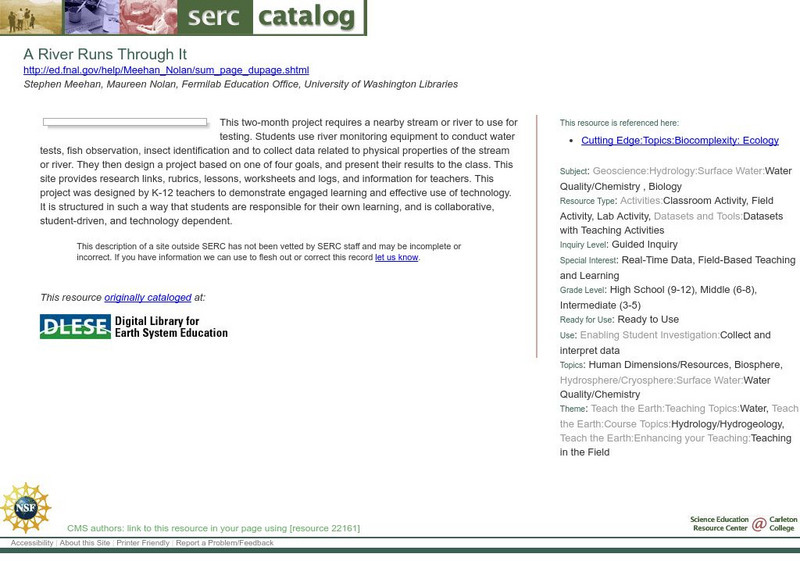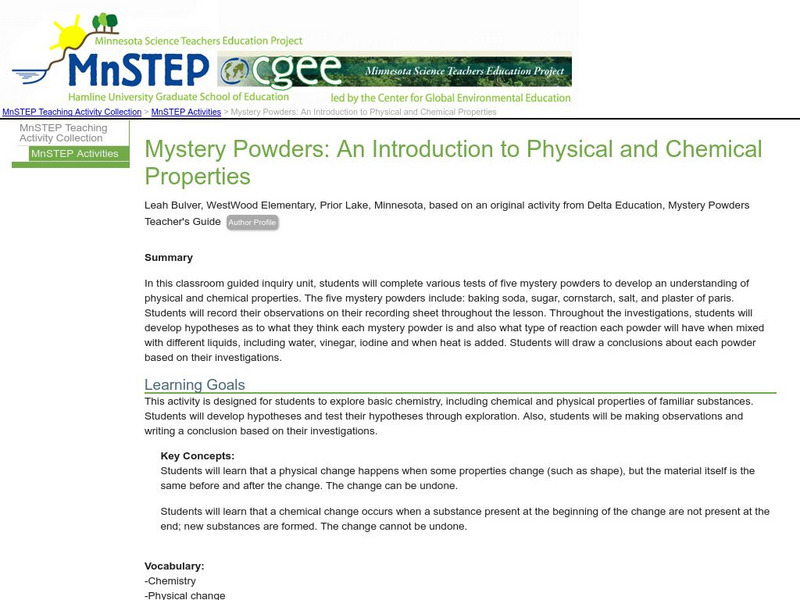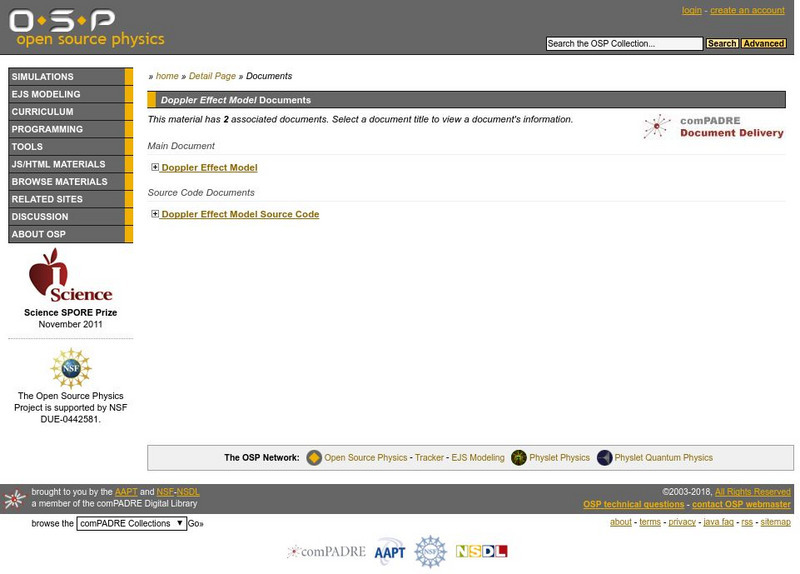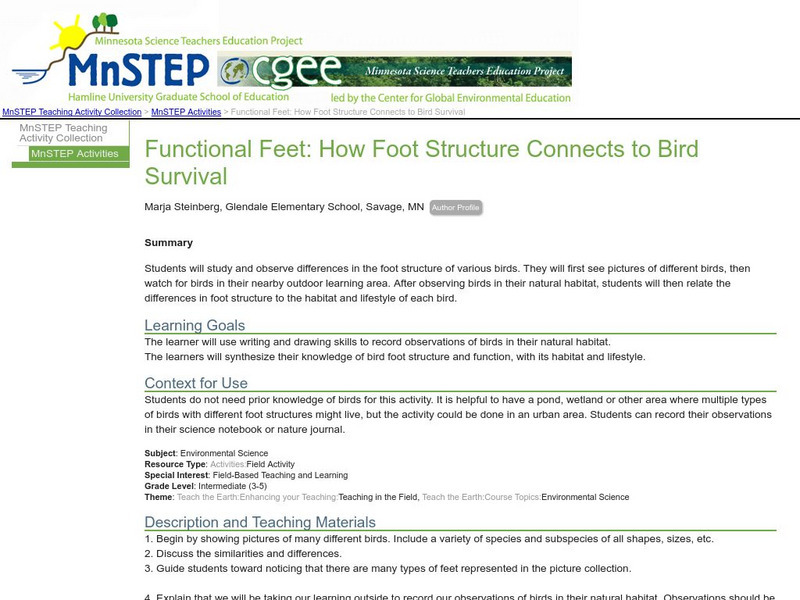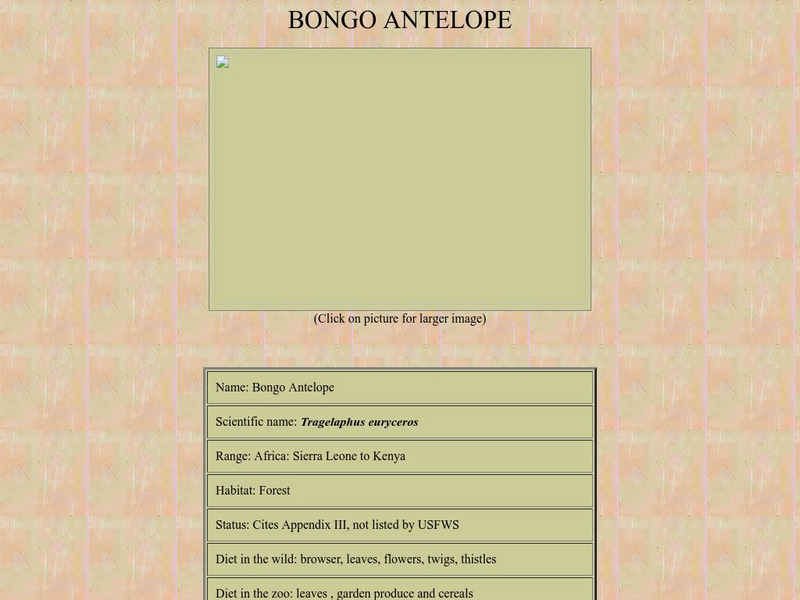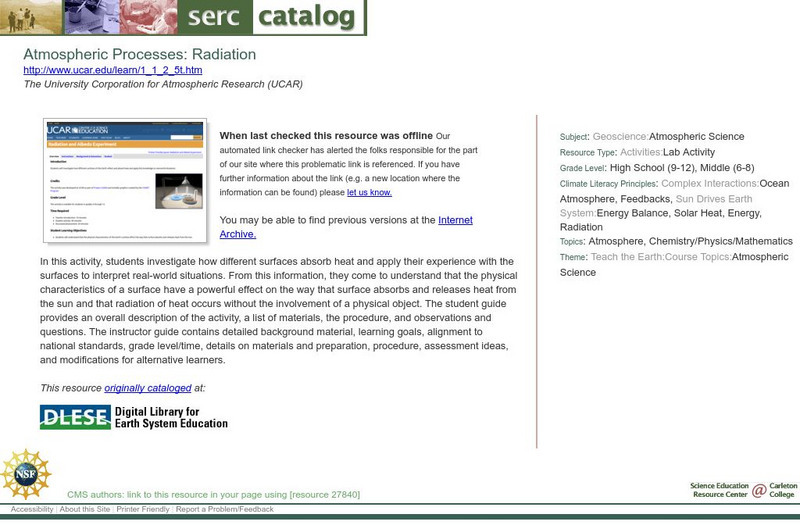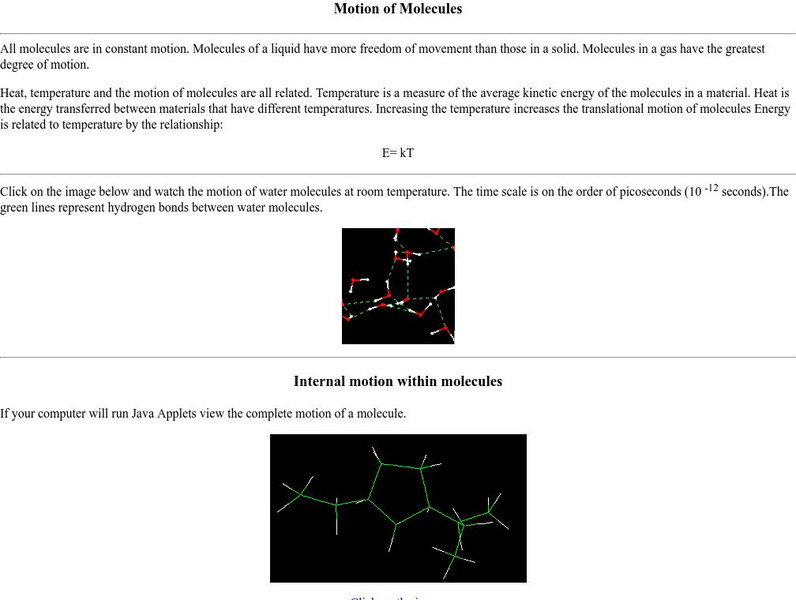Hi, what do you want to do?
American Association of Physics Teachers
Com Padre Digital Library: Open Source Physics: Equatorial Coordinates Model
Using equatorial coordinates, observers will examine the position of a star over the course of the night sky in this simulation.
Science Education Resource Center at Carleton College
Serc: A River Runs Through It
This two-month project requires a nearby stream or river to use for testing. Learners use river monitoring equipment to conduct water tests, fish observation, insect identification and to collect data related to physical properties of...
Science Education Resource Center at Carleton College
Serc: Mystery Powders: An Introduction to Physical and Chemical Properties
Students will complete various tests of five mystery powders to develop an understanding of physical and chemical properties. They will record their observations and develop hypotheses as to what they think each mystery powder is and...
Concord Consortium
Concord Consortium: Stem Resources: Baggie Chemistry
Observe chemical and physical changes with this lab using everyday household items. Lab includes procedure and online data collection tool where answers can be saved and graded by teacher.
American Association of Physics Teachers
Com Padre Digital Library: Open Source Physics: Doppler Effect Model
A simulation of the Doppler Effect, where a change in wave frequency can be observed from the reference frame of the wave source, an observer, or the medium.
CK-12 Foundation
Ck 12: Fifth Grade Science: Physical Science: Separating Mixtures
[Free Registration/Login may be required to access all resource tools.] Discusses how mixtures of solids can be separated based on observable properties of their parts such as particle size, shape, color, and magnetic attraction.
American Chemical Society
Middle School Chemistry: Lesson Plans: Using Chemical Change to Identify Unknown
Students observe reactions of liquids with different known powders in this lesson. Unknown powders are then identified using characteristic chemical changes.Site includes a procedure, teacher instructions, and video instruction.
Science Education Resource Center at Carleton College
Serc: Functional Feet: How Foot Structure Connects to Bird Survival
Students study and observe differences in the foot structure of various birds by studying pictures, and then observing the birds themselves. After observing birds in their natural habitat, students then relate the differences in foot...
Other
Who Zoo: Bongo Antelope
The Fort Worth Zoo provides a general overview of the Bongo Antelope. Content includes a focus on the antelope's physical description, behavior, and personal observations.
McREL International
Mc Rel: Glue Polymer (Whelmer #15 Learning Activity)
An easy to do activity that investigates the basic principles behind chemical bonding. The activity is written in lesson plan format that meets NSES standards.
Science Education Resource Center at Carleton College
Serc: Trends on the Periodic Table: Metals, Non Metals, and Metalloids
In this lab activity, learners will be asked to observe and then test the physical and chemical properties of several different elements.
Science Education Resource Center at Carleton College
Serc: Investigating Polymers: Comparing Two Liquid Glue Based Polymers
In this experiment, learners will work in small groups to create two different polymers, similar to Flubber and Silly Putty, using Elmer's glue, liquid laundry starch, and Borax. They will then compare the properties of the two polymers....
Science Buddies
Science Buddies: Slime Chemistry
Have you ever wondered how fun toys like Silly Putty, Gak, and Slime are made? These products are so much fun because of the properties of polymers, which make them delightfully bouncy, stretchy, sticky, moldable, breakable, hard, soft,...
ClassFlow
Class Flow: Introduction to Matter
[Free Registration/Login Required] This flipchart is a basic introduction to the properties of matter, mass, and weight. It discusses the physical properties of objects.
American Museum of Natural History
American Museum of Natural History: Grow Rock Candy
Students can carry out an investigation using sugar and water to determine whether heating or cooling a substance may cause changes that can be observed. This activity reinforces the ideas that the properties of materials can change when...
Other
The Science House: Combustion
In this experiment, students will observe that the weight of the product of combustion is greater than that of the starting material. Teacher's notes address the key concepts of this experiment.
Science Education Resource Center at Carleton College
Serc: Atmospheric Processes: Radiation
In this activity, students investigate how different surfaces absorb heat and apply their experience with the surfaces to interpret real-world situations. From this information, they come to understand that the physical characteristics...
New York University
Nyu: Math Mol: Motion of Molecules
Examine the link between molecular motion and energy. Observe the movement of a molecule at room temperature. Learn about the different types of molecular motion.
National High Magnetic Field Laboratory
Magnet Academy: Felix Bloch (1905 1983)
Physicist Felix Bloch developed a non-destructive technique for precisely observing and measuring the magnetic properties of nuclear particles. He called his technique "nuclear induction," but nuclear magnetic resonance (NMR) soon became...
American Geosciences Institute
American Geosciences Institute: Earth Science Week: Mineral Identification
At this site you can identify minerals by observing and testing the physical properties of each mineral. A mineral worksheet and mineral background sheet are included in this site.
Museum of Science
The Atom's Family: Phases of Matter
Help the Phantom choose a material and observe the changes at different temperatures in the molecule chamber. What happens to the elements or molecules as the temperature changes?
Michigan Reach Out
Nasa Trc: Maple Seed Helicopters
Students study the aerodynamic properties of a maple seed and then apply what they observe making their own flying object.
Other
The Science House: Floating Candles
In this experiment students observe a combustion reaction and deduce the components necessary for the reaction to occur. They also see the relationship between pressure, volume, and number of molecules for gases.
Texas Instruments
Texas Instruments: Forensics Case 7 Drug Tests: Identifying an Unknown Chemical
In this activity, students distinguish between physical and chemical properties. They also understand the differences between qualitative and quantitative observations. They use quantitative and qualitative analyses to identify an...






